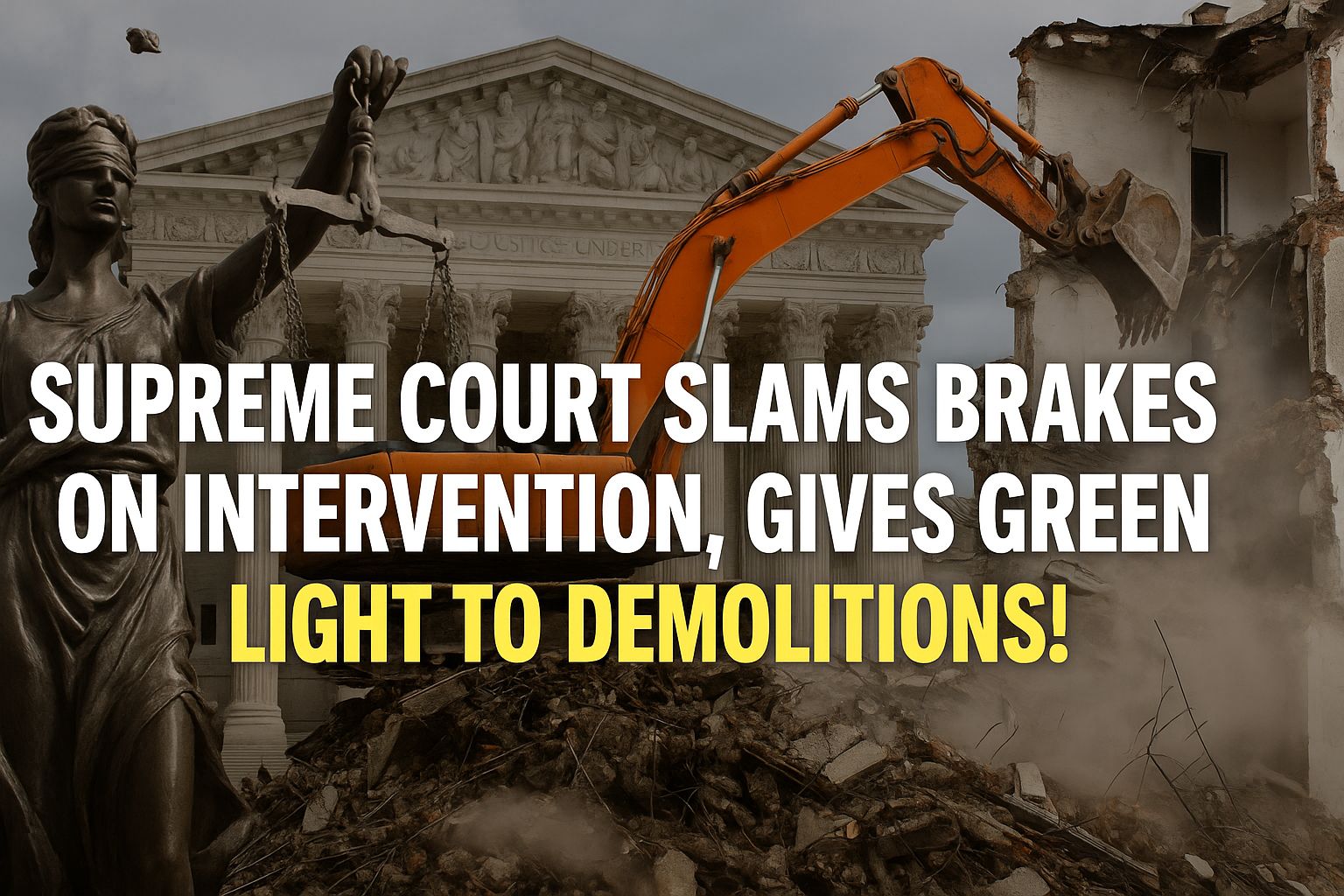Supreme Court made a significant decision which may shape urban areas , the supreme court have made a decision to not intervene in demolition of unauthorised 17 constructions , effectively supports the high court . The ruling highlights that supreme court increases firmness to ensure the law to be followed strictly and people should not misuse the court’s kindness or leniency about illegal construction .
A Landmark Decision
The matter at hand involved a series of petitions filed by residents and developers against the demolition of illegal buildings in a prominent urban locality. These constructions were marked for demolition by municipal authorities following the decision of high court as they lacked proper permissions and voilated laws. The petitioners approached the Supreme Court for a chance to seek relief , as the high court clearly refused to interfere.
“The High Court has rightly applied its judicial mind. We see no reason to intervene,” the Supreme Court bench observed. It praised the High Court for taking a bold and lawful stand, stating, “Kudos to the High Court for taking a right decision.
Legal Background
The issue of illegal constructions has been a serious issue in Indian cities , the reason urbanisation growed rapidly , enforcement became weak and builders voilated regulations. Moreover it led to higher environment degradation and overcrowding in urban areas . Often, such illegal developments continue as reamain unchecked until a Public Interest Litigation (PIL) is filed or through activist itis known to judiciary.
In this case, several buildings had voilated the rules and regulations such as not following the minimum standards , not following the safety protocols .Despite repeated notices, the builders and occupants failed to comply with the rules resulting into the demolition after ages.
Supreme Court’s Strong Message
The court reiterated that the right to shelter cannot extend to constructions that blatantly ignore statutory requirements. “You cannot cry foul after breaking the law,” said the bench. It also emphasized that civic governance cannot be compromised for individual gain.
Experts have hailed this decision as a watershed moment. Senior advocate Priya Mehra stated, “This marks a judicial turning point. The Supreme Court has clearly delineated the boundary between compassion and compliance. It’s a win for planned development and accountability.”
Human Angle and Government’s Role
While the ruling is being praised by legal experts and urban planners, it has drawn criticism from affected residents, many of whom now face displacement. “We invested our life savings. We didn’t know the builder had flouted the law,” said one resident whose flat now faces demolition.
This raises questions about the responsibility of municipal authorities and housing regulatory bodies that failed to act when the buildings were being constructed. Lack of civic sense and corruption often gives a hand in these illegal developments. The Supreme Court, while upholding the demolitions, also brought into notice the need for fixing administrative accountability.
The central and state governments may now be under pressure to create something to help the occupants which suffered including to build up a Redressal system.
Conclusion
The Supreme Court’s refusal to intervene in the demolition of illegal constructions marks a firm statement that lawful development and governance is supreme.
The message is loud and clear: follow the law, or be prepared to face the consequences. Indian urban landscape should also follow sustainablility as following laws is not optional it is the base.
About the author
Chetna is a 3rd-year BBA LLB student at Maharishi Markandeshwar University, Mullana. With a passion for law, policy, and current affairs, she actively engages in research and writing on legal developments shaping society. Chetna aims to bridge the gap between legal discourse and public understanding through clear and concise analysis.

